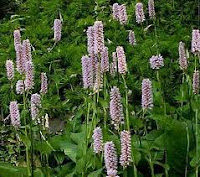The horned melon is a native of southern Africa , and the World Health Organization hopes that it will become a more acceptable food for the people who are suffering from malnutrition in the still-developing world.
The horned melon was taken to Australia New Zealand
 The tribal peoples in its native countries only eat it roasted, although they use the boiled roots to treat gonorrhoea, and eat the boiled leaves as we would spinach. A decoction of the root is given to women after childbirth for pain relief, and the leaves are sometimes eaten mixed with maize or corn meal. The pounded roots are mixed with fat and used to cover the body in the belief that this will keep ghosts and evil spirits at bay.
The tribal peoples in its native countries only eat it roasted, although they use the boiled roots to treat gonorrhoea, and eat the boiled leaves as we would spinach. A decoction of the root is given to women after childbirth for pain relief, and the leaves are sometimes eaten mixed with maize or corn meal. The pounded roots are mixed with fat and used to cover the body in the belief that this will keep ghosts and evil spirits at bay. The seeds and pulp of the kiwano are very nutritious as the seeds contain Vitamin A in the form of carotenoids such as Beta-carotene, which promotes the health of the eyes, and skin as well as having free-radical scavenging properties and boosting the immune system. The seeds contain oleic and linoleic fatty acids too making them very good for blood pressure and overall health.
 The fruit is a good source of vitamin C, potassium and iron and also contains vitamins B1, B2 and B3, along with the minerals magnesium, phosphorous, zinc, copper, calcium and sodium. The organic vitamin E found in the fruit is a good source of free-radical scavenging antioxidants, so this fruit is good for protection against cancer and cardiovascular diseases.
The fruit is a good source of vitamin C, potassium and iron and also contains vitamins B1, B2 and B3, along with the minerals magnesium, phosphorous, zinc, copper, calcium and sodium. The organic vitamin E found in the fruit is a good source of free-radical scavenging antioxidants, so this fruit is good for protection against cancer and cardiovascular diseases. If you find one in your local supermarket treat it as you would a passion fruit. You can cut the melon in half and scoop out the seeds and blend them and the pulp to make a refreshing drink, adding lime or lemon juice and honey to enhance the flavour if you want to. You could simply scoop out the flesh and pour it over natural yoghurt or ice cream, and it is said that the seeds can taste like bananas, melon, lime, or even cucumber.
 The Latin name for this fruit, metuliferus, comes from two words, metula meaning little pyramid and ferus meaning bearing; these names refer to the spiny skin or the ‘horns’ on this melon. It is ripe when the skin is bright orange, and may be stored at room temperature for best nutrition, but can also be stored in the fridge.
The Latin name for this fruit, metuliferus, comes from two words, metula meaning little pyramid and ferus meaning bearing; these names refer to the spiny skin or the ‘horns’ on this melon. It is ripe when the skin is bright orange, and may be stored at room temperature for best nutrition, but can also be stored in the fridge. Why not try it and let us know what you think?
















